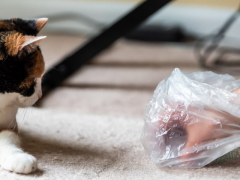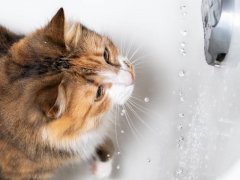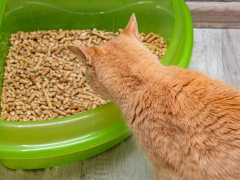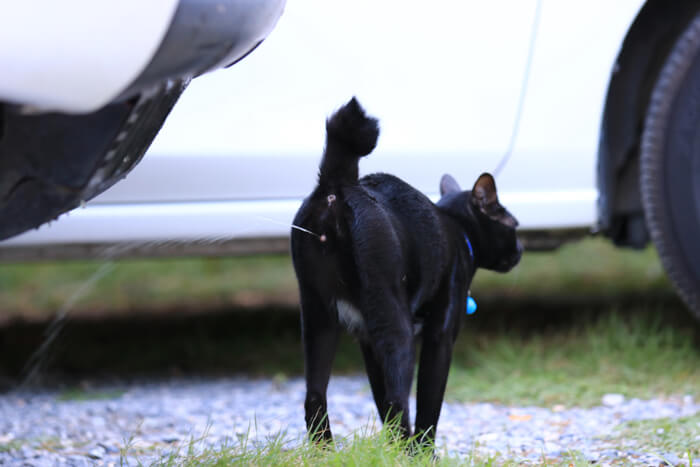
Cats come from wild cats and it is a natural behavior to mark their territory. For a cat, spraying an area is like leaving their personal calling card. However, in our civilized world, marking inside your home by urinating is not very pleasant. But the good news is that there are ways to stop a cat from spraying.
Read on to learn about spraying in cats and how to make it stop.
Why Do Cats Spray
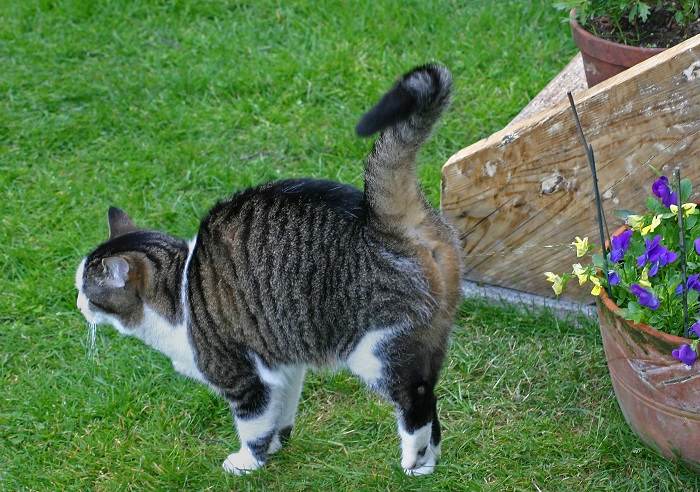
Cats rely very much on their scent to mark their territory as part of their normal animal behavior.
Whether a cat marks by rubbing on surfaces or urinating on them, scent marking signals to other cats that this place is already occupied and there is no place for others in this area.
As urine marking is instinctive behavior, it is deeply ingrained in our cats. Even pure indoor house cats show this behavior.
The moment this personal scent changes, like after a visit to the groomer or vet, other cats might not regard the cat as part of their family until the foreign smell disappears. Therefore, cats usually start rubbing after coming back home to change their smell and restore their markings in the home.
What Is Spraying?
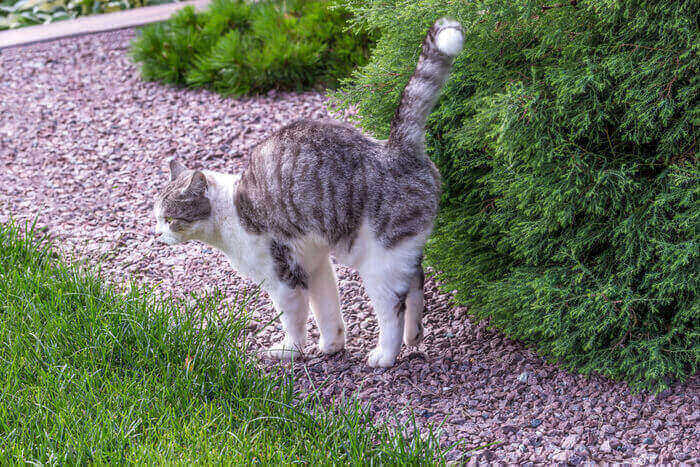
Both male and female cats can spray. They usually do this by lifting their tails upright and squirting urine backwards onto a vertical surface.
Spraying can be found in adult cats. Both male and female cats can spray on vertical surfaces 6 to 8 inches high. It’s quite amazing how flexible they are when it comes to marking their territory. This marking can be done outdoors as well as indoors.
Spraying should not be mistaken with urination. Although it is another form of marking a cat’s territory, urination is performed on horizontal surfaces of furniture, floors, and items lying around. The higher the number of cats is in a household, the likelier cats will spray to claim their territory. In homes with more than 10 cats, all cats usually spray.
When Do Cats Start Spraying
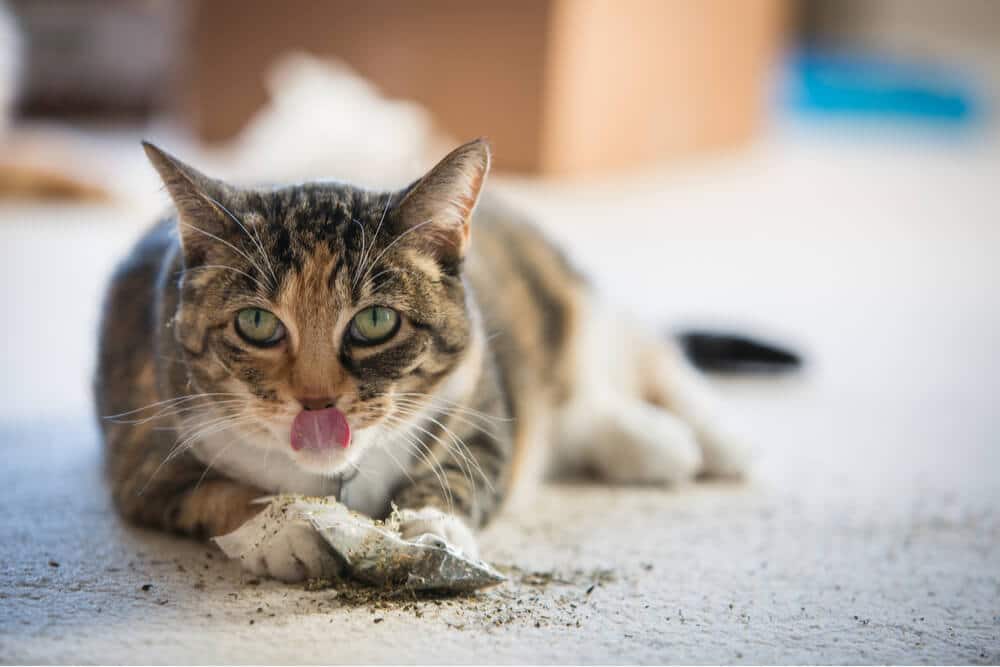
Spraying may start as early as the age of 5 months as cats reach sexual maturity. The signs of cat spraying include intensively sniffing the area, subsequently the cats usually lift their tail upright and squirt their urine on the surface of preferred objects. Those can be a wall, chair, full-length curtain, radiators, clothes, plastic bags, etc.
The amount of urine is small, maybe less than 2ml, and it can be sometimes only a few brownish sticky drops. The urine smell of unneutered male cats is particularly pungent and distinct. It is often described as a tomcat smell.
Potential Causes of Spraying
Spraying has several causes, and we can divide these into behavioral and medical reasons.
1. Behavior Problems

When your cat displays classic naughty cat behavior, try not to take it too personally.
- New Cat In The Home- Your old cat might not like it and get jealous or stressed when you bring a new pet or a new cat home. The once clearly distributed territory is in danger due to the arrival of this new cat. So, the old cat might want to make her power very clear to the newbie that it’s all her territory. This can lead to spraying even if the old cat didn’t do it before.
- Stress – Stress for cats often goes unnoticed by us. Changing the furniture, buying something new and rearranging the home, visitors or stay-in relatives are no big deal for us. For cats, this might lead to considerable stress as their routine is changed. Cats rely on their habits and these are not in favor of changes in the home. Therefore, they may start to spray while their cat owners don’t understand the reason for it. They can’t see the stress factor for their cat.
- Mating – Male cats that are not neutered are looking for a mating partner. This leads to marking their territory to deter potential rivals. Spraying behavior helps them to attract female outdoor cats in the neighborhood.
2. Medical Reasons
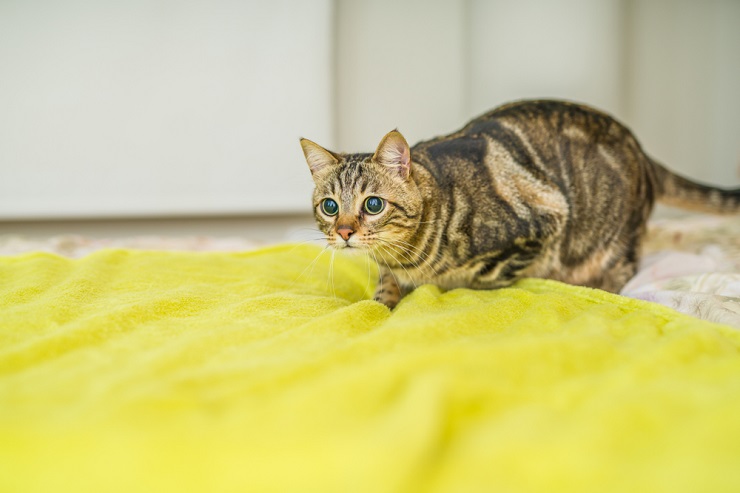
Some cats will spray or exhibit similar behavior for medical reasons.
A cat with urinary tract disease or cystitis may leave small amounts of urine in various places. These conditions may also lead to spraying, especially in unneutered males. They often experience urinary tract infections that can lead to urate crystal formation. These crystals can block the urethra.
Therefore, due to that medical condition, the urine can’t get out while a cat is sitting in the litter box. The male cats try to get rid of the urine by pressing little amounts out.
This may lead to medical emergencies that can be fatal. Therefore, it is important to visit the vet with your cat to get a proper diagnosis and medication to solve these medical issues.
How To Stop a Cat From Spraying?
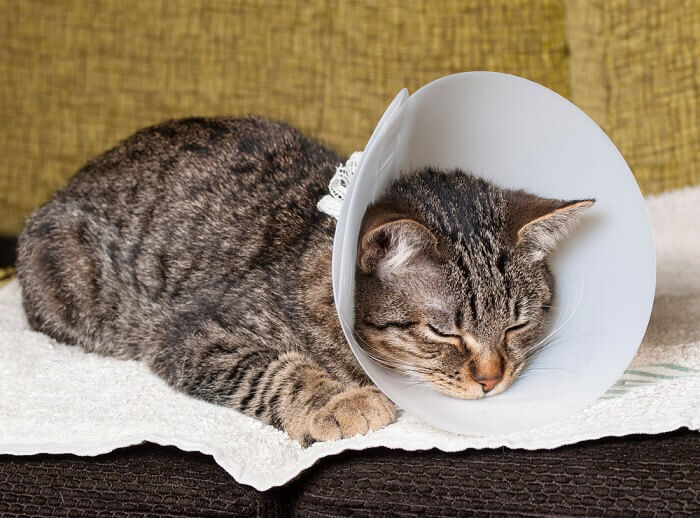
Cats usually start spraying due to behavioral issues, but spraying may also be a sign of illness. Once you’ve identified the cause of their spraying, you’ll have to eliminate that underlying cause to help them stop.
1. Neutering
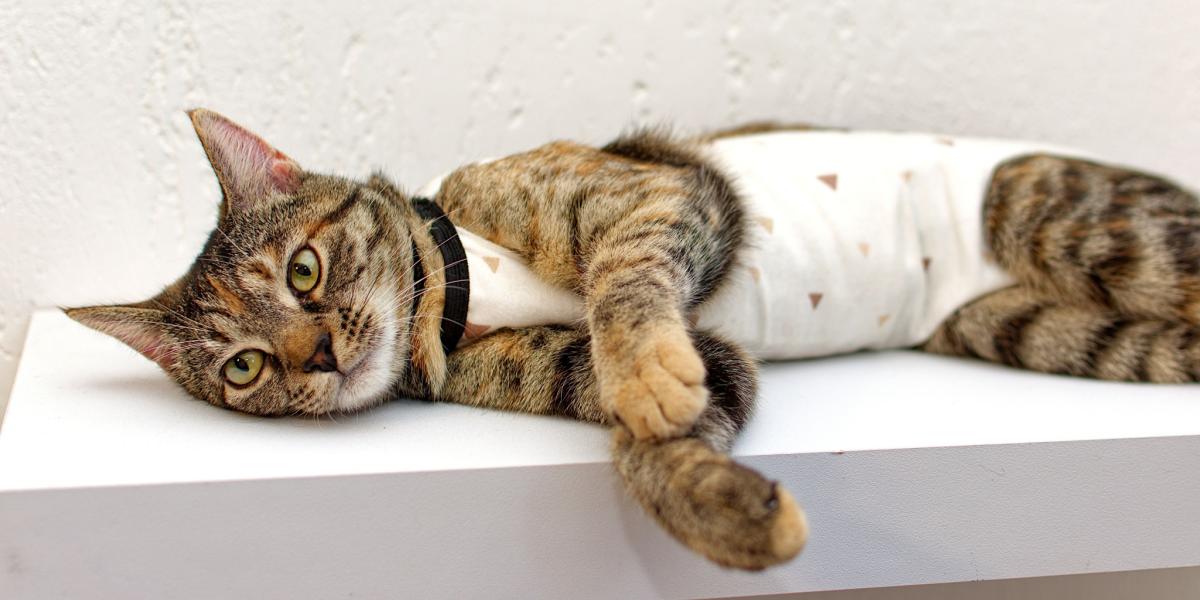
Cat owners often ask if neutered cats spray? The answer is that among both males and females, marking behavior found much less or not at all when cats are neutered. An estimate of only 10% neutered male cats and 5% female cats still spray after neutering.
In general, neutered cats are much more relaxed as they don’t have the urge to fight for their territory due to their lower hormone impact.
Neutering is the best way to prevent a cat, especially a male cat, from spraying. However, this should be performed at a young age as older males might have already an ingrained habit of spraying that is difficult to break and eradicate. Watch the video below for more information on Spaying and Neutering Cats.
Nevertheless, until the hormone levels decrease after the neutering (this might take a few weeks) the cat might still spray. This is something the cat parent needs to keep in mind and be patient.
2. Environmental Changes
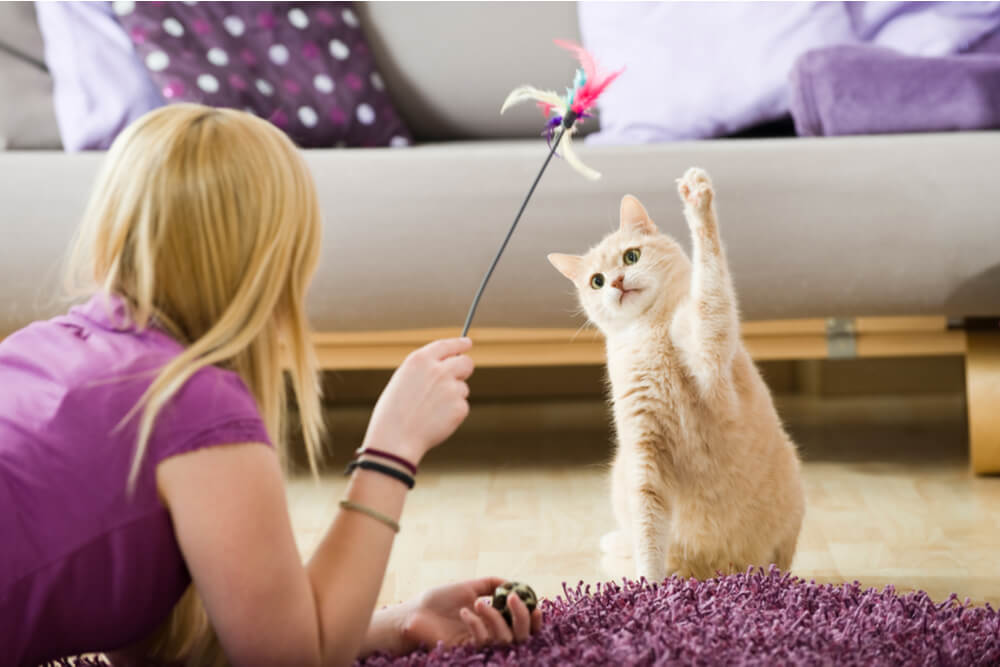
Like most behavioral problems, environmental changes can often help to alleviate spraying in cats.
Clean the Area
Thorough cleaning of the soiled areas is important to stop the cat from spraying in this place again. The cleaning agent shouldn’t have a too strong smell. Otherwise, the cat might want to spry over it to get rid of that strong smell which would be counterproductive.
3. Rearrange Your Cat’s Environment
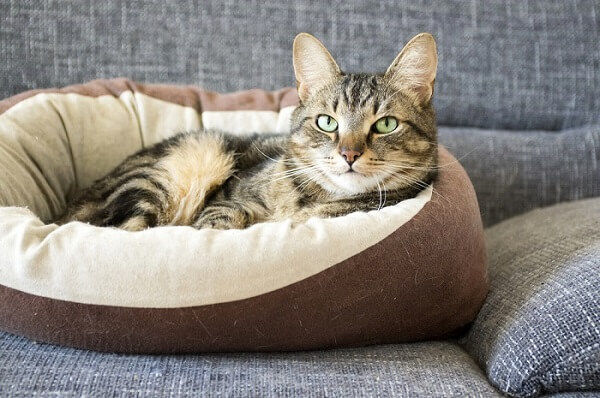
Changing the feeding place to the area where your cat likes to spray can stop the spraying. Cats don’t like to eat in places that smell of urine. Additionally, make sure that your cat has an appropriate number of litter boxes. The number of litter boxes should be one more than the actual number of cats. So, in the case of 2 cats, a third litter box should be added to decrease the cats’ tendency of spraying.
4. Prevent Spraying on New Items
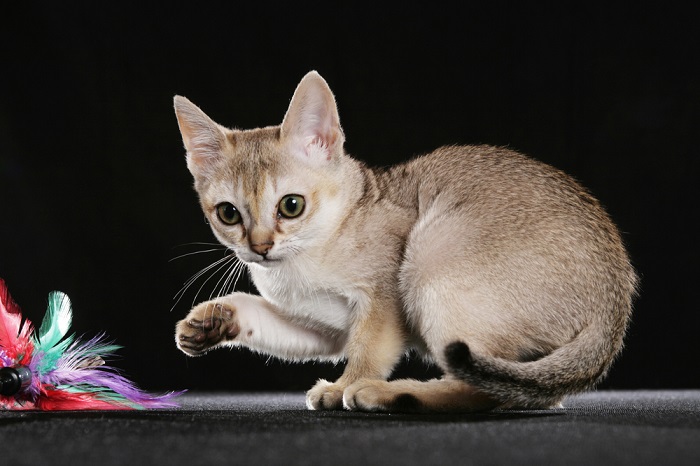
Some cats don’t like newly purchased items in the house. One possibility to stop her from spraying on it is to keep it in a room where the cat isn’t allowed to enter. If the target object is small enough, hide it in a drawer for a while.
5. Limit Exposure to Rival Cats
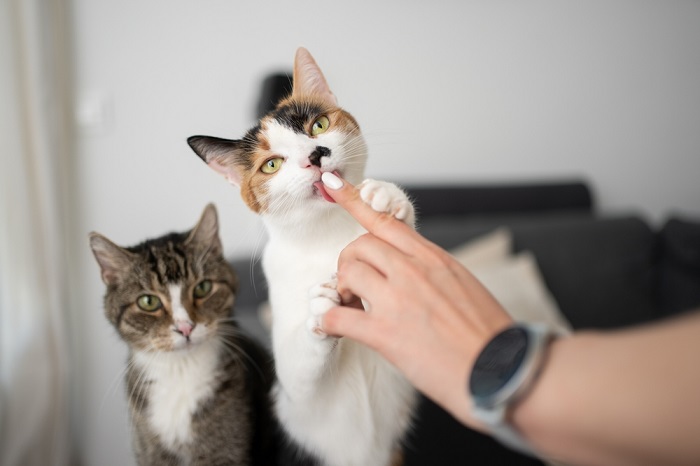
Some cats get motivated to spray when they see a rival outside the window. To stop them from marking their territory inside the home, the access to those lookouts should be reduced or restricted.
Spraying can be caused because of a multi-cat environment. If multiple cats live together in one cat household who do not have a good relationship with each other, they should be separated and kept in different rooms. This helps to avoid contact. This reduces their stress and territorial behavior and prevents spraying.
6. Provide Stimulation
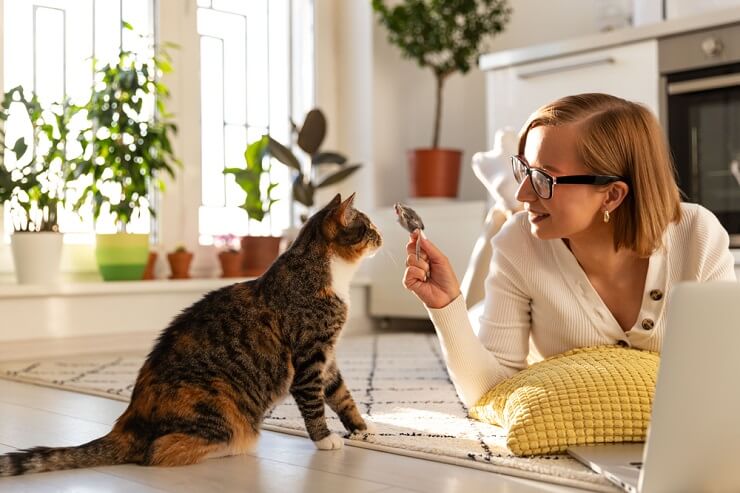
Giving your cat lots of attention and keeping her active with exercise and mental stimulation through interactive toys is a good way of preventing spraying. Homeopathic remedies might help to reduce anxiety in your cat.
7. Medical Solutions
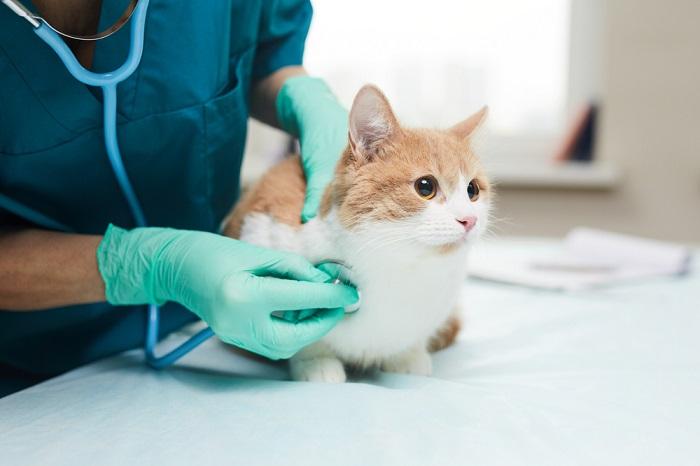
Depending on the veterinarian’s or veterinary behaviorist’s advice, behavior modifying drugs such as Clomipramine or Fluoxetine might be used in treating spraying after ruling out medical causes. They decrease urine spraying, reduce separation anxiety, dominance aggression, and excessive grooming.
Another drug that might be used to prevent cat spraying is Bromocriptine. It is reported to have a success rate of 85% in treated males and 40% in females. However, caution needs to be taken as Bromocriptine can cause multiple side effects with prolonged treatment such as hallucinatory effects, limb flicks and head or body shakes.
In general, behavior-modifying drugs should only be taken as prescribed by a veterinarian. They should be regarded as a last resort and not taken over a prolonged period of time due to potential side effects.
8. Feliway®
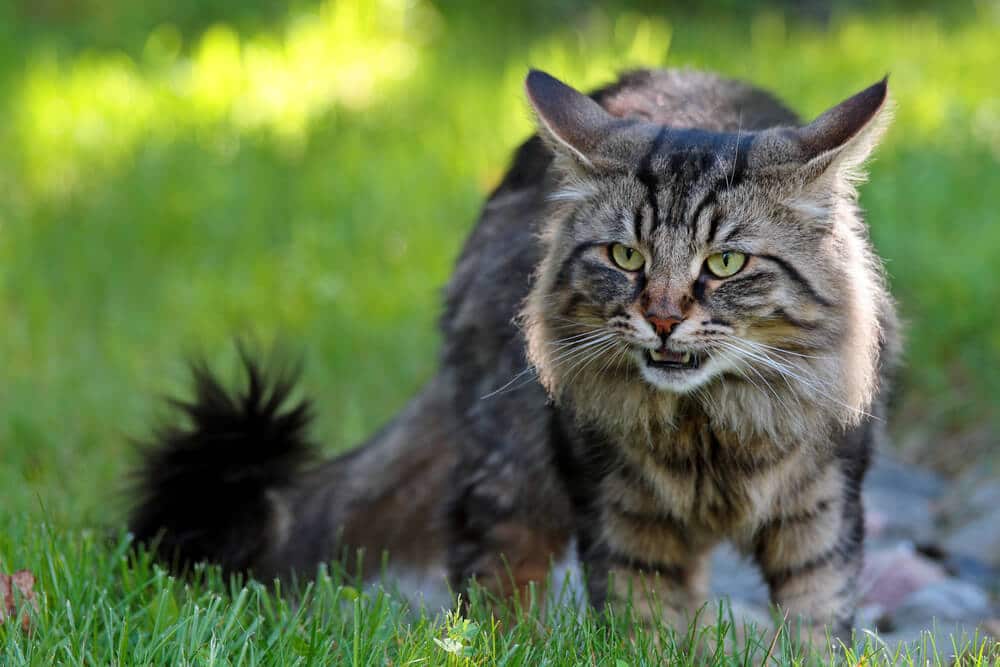
Synthetic pheromones distributed by diffusers are helpful, too. By mimicking the feline facial pheromones (substances that are excreted from the body) through Feliway®, the cat receives a message to feel happy and safe. She feels more comfortable and relaxes through those artificial pheromones. This reduces the spraying to a major extent or stops it completely.
Conclusion
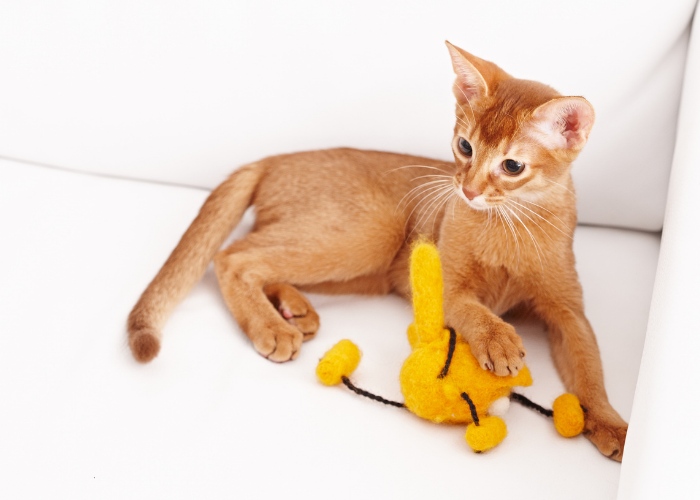
Although spraying is a very unpleasant problem, it is not an issue that cat owners and all family members have to live with. There are good preventive measures in place that can successfully prevent or stop spraying.
The most important thing is to identify the cause of spraying. Only when we know the source of the problem, we can take corrective measures. Therefore, the cats should not be punished as this would only lead to more stress and more spraying.
Don’t forget, your cat is not a machine that you can switch off with the press of a button. It takes time and patience to find out the cause and to correct the problem.
